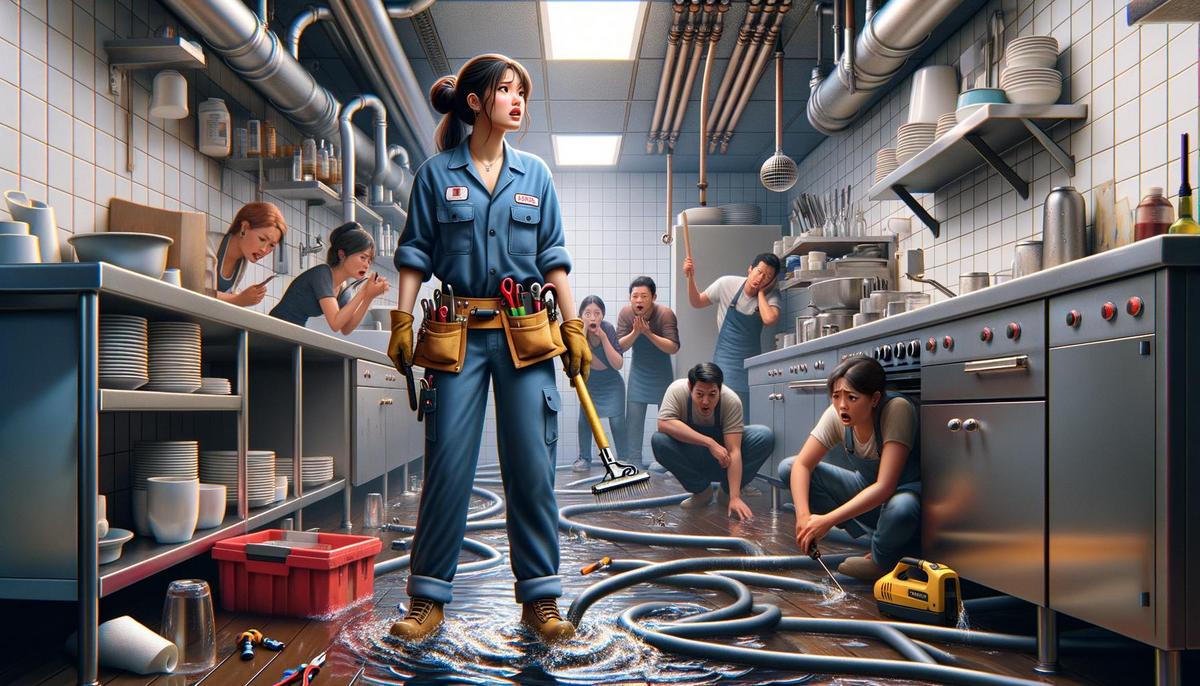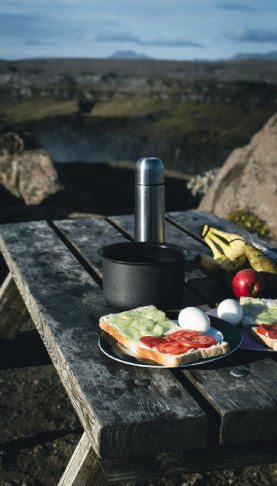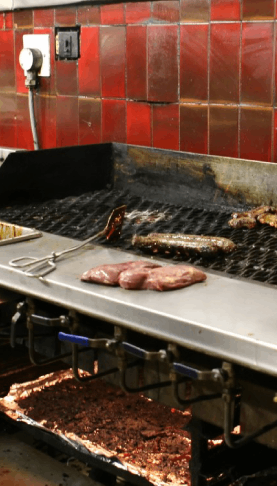An emergency plumber can save your restaurant by stopping leaks, backups, or a dead water heater fast, so you avoid closures, food loss, and bad reviews. If you need someone right now, contact an emergency plumber Westminster and get a tech on site before damage spreads. Time matters more than anything. Forty minutes can be the difference between a wet floor and a full shutdown with mold risks later. I have seen both, and the second one hurts.
You run a kitchen. You care about food, guests, and smooth service. Plumbing only matters when it breaks. That is normal. Still, one clogged floor drain can slow expo, hold plates, and mess with your night. Water has a way of going where it should not, and it never waits for a slow hour. It shows up during brunch, or during Friday dinner, or right before a health inspection. That is why the first call, the right call, is what saves the day.
Your best emergency plan is a saved phone number and a clear first 10 minutes of actions your staff can follow without you.
What is at stake in a restaurant when plumbing fails
Plumbing issues in a restaurant are not just mess and mops. They hit revenue, food safety, morale, and reputation. I do not want to scare you, but I want to be plain about it.
– You can lose hours of service. That is real money.
– You risk code violations if sewage backs up or hot water drops.
– You can damage floors, drywall, and equipment bases.
– You frustrate guests and your team. People remember the smell more than the special.
Here is a quick view of how common problems connect to business impact.
| Problem | Immediate risk | Likely impact if not fixed fast | Typical emergency fix |
|---|---|---|---|
| Backed-up floor drain | Slip hazard, sanitation risk | Line stoppage, partial closure | Snake or jet line, clean and sanitize |
| Grease trap overflow | Odor, contamination risk | Dining room complaints, possible closure | Pump trap, jet lines, adjust schedule |
| Burst pipe | Flooding, loss of water | Full closure, water damage | Shutoff, repair section, dry down |
| Water heater outage | No hot water for warewashing | Inspector can shut you down | Relight or replace parts, temporary unit |
| Sewer backup | Health risk | Immediate closure | Clear main, disinfect, document cleanup |
If hot water drops below safe temps, dish cycles suffer and your inspector will not be kind. Fix the heat first, then everything else.
What an emergency plumber does in the first hour
A good tech follows a tight sequence. You can mirror this thinking to help them help you.
– Arrive and locate main shutoff points. Confirm water, gas, and power status.
– Triage. Which fixture or line is the real source, not just the symptom.
– Stop the spread. Shut valves, dam with towels, set containment.
– Clear the line or isolate the break. Often this is a targeted snake or jet.
– Restore basic function for service. You may not get a perfect finish right away, but you need running water, safe drains, and hot water.
– Document what happened and what to do next.
Speed beats perfect. Get safe water and drains now, then schedule the pretty work when the doors are closed.
I like to ask for a 15, 60, and 240 minute plan from the tech. Not every job allows that. Still, it keeps everyone focused.
– First 15 minutes: stop the damage, protect staff and guests.
– First 60 minutes: restore key functions, like dish and line sinks.
– First 240 minutes: stabilize, clean, set a plan for permanent repair.
Common Westminster restaurant emergencies and why they happen
Westminster has colder snaps in winter and quick temperature swings. Pipes in older buildings see stress. Some kitchens sit over long sewer runs with low slope. Grease loads build up. None of this is rare.
Burst or cracked pipe during a cold night
If a prep sink line runs near an exterior wall, a freeze can crack it. You might not see it until the lunch rush when flow goes up.
What to do right away:
– Kill water to that section if you can.
– Move prep to another station, and cover nearby food.
– Call your plumber, and ask for a section repair, not a full repipe during service.
What the tech will likely do:
– Heat and thaw if there is ice, then cut out the cracked piece.
– Add insulation or reroute if the route is bad.
– Suggest valve changes so you can isolate next time.
Backed-up floor drains on the line
This one hits during peak hours. Flour, rice, and food bits find the trap. Grease makes it worse. You might think hot water will clear it. It often makes clumps move and then lodge harder downstream.
What helps:
– A quick snake to the nearest cleanout, then a rinse.
– Hydro jetting after close to clean the line walls.
– Strainer baskets in floor sinks and a stricter scrape rule at the dish pit.
Small habit change matters here. I watched a team start a 15 second plate scrape step and their blockages dropped a lot, like almost gone. Not magic, just fewer solids in the drain.
Grease trap overflow or stink near the dish area
If the trap is full or the baffles are loose, you get slow drains and odor. Guests smell it when the door swings open. You smell it all day.
Ask the plumber to:
– Check baffles and inlet levels.
– Pump if needed, then jet the downstream line right away.
– Reset the schedule for pumping. Weekly, every 2 weeks, or monthly. Do not stretch it too far to save on one invoice, it costs more later.
Water heater failure during dinner
Hot water keeps dishes safe. If the burner will not light or a mixing valve sticks, you get lukewarm water and that small panic. I have felt it. You hope it comes back. It rarely does on its own.
What a tech can do:
– Relight and test the gas train.
– Replace a thermocouple, igniter, or mixing valve.
– Bring in a temporary unit if parts are special order.
Ask for a temperature log sheet. Keep it by the dish area. Have staff record readings during rush and at close. It helps spot slow drops before a failure.
Restroom flood or sewer smell in the dining room
Guests notice bathroom issues first. A single clogged toilet can spread fast if staff keep flushing to check. Do not do that. Turn water to that toilet off and call for help.
A plumber will:
– Pull the toilet if needed, clear the blockage, reset the wax ring.
– Check vent lines if smells linger, not just the bowl.
You can help by keeping a plunger and stop valve key within reach, not locked in a closet across the building.
Is a gas leak a plumber issue
Some plumbers handle gas lines. If you smell gas, evacuate and call the utility first. Then your plumber can pressure test and repair. Do not try to light appliances to see if they work.
How to pick the right emergency partner in Westminster
You do not need ten numbers. You need one that actually picks up at 10 pm and shows up.
Look for:
– Real 24 hour response, not a voicemail that says tomorrow.
– Restaurant experience. Ask for three local references.
– Stocked vans with common parts for water heaters, traps, and valves.
– Clear pricing by the hour with arrival windows and minimums stated.
– The ability to provide a short service report for your records.
Call during a calm day and ask simple questions. See how they answer. If they talk in circles, you might get the same during a flood. You want plain words and crisp timing.
What downtime really costs your restaurant
It is easy to think a service call is expensive. It can be. But compare it to a lunch or dinner lost. Even a partial slowdown hurts.
Here is a simple way to think about it.
| Scenario | Assumptions | Lost revenue | Added costs | Comment |
|---|---|---|---|---|
| Floor drain backup, 2 hours | $2,000 per hour sales, 30 percent food cost | $4,000 | $200 cleaning supplies, overtime | One snake visit would be less |
| Water heater outage, dinner lost | $3,000 per hour sales for 3 hours | $9,000 | Refunds, comped meals | Temporary unit could keep you open |
| Sewer backup, full closure | One full shift | $8,000 to $12,000 | Sanitation service, deep clean | Prevent with jetting and trap schedule |
I am not saying you should call a plumber for every drip. I am saying a fast call for a real issue is often cheaper than trying to ride it out.
A quick SOP your staff can follow before help arrives
Write this on one page. Post it by the manager station and the dish pit.
– Find the water shutoff for each sink, toilet, and appliance.
– If water is rising on the floor, stop it first. Place wet floor signs.
– Move open food away from the area. Cover pans nearby.
– Switch to disposable service if dish is down and you can keep serving safely.
– Start a log. Time of issue, who found it, what you did.
– Call your plumber and state the problem in one sentence. Example: “Line floor drain is backing up and rising, water heater is fine.”
– Take two photos. One wide, one close. Helps with later repairs and insurance.
– Keep staff off phones about the issue near guests. Guests sense panic.
You can adjust this to fit your kitchen. The point is to remove guesswork.
Maintenance that reduces emergencies
No one loves paying for maintenance, I get it. Still, a few simple steps cut late night calls in half, sometimes more.
– Jet main kitchen lines every 3 to 6 months based on grease load.
– Pump the grease trap on a set schedule. Do not push it.
– Test backflow yearly to stay compliant and safe.
– Inspect water heater anodes and flush sediment each quarter.
– Add strainers to all sink drains. Replace when bent or missing.
– Train staff on scrape and pre-rinse habits. The dish area makes or breaks your drains.
– Place water leak sensors under the water heater and near ice machines. They are cheap.
– Wrap exposed pipes near exterior walls before winter.
I once thought backflow testing was just paperwork. Then a valve failed at a cafe I worked with and city water inspectors showed up. The owner spent two days chasing parts. After that, yearly testing felt easy.
What to ask the plumber on site
Do not just nod and sign. Ask questions. Short ones are best during service.
– What caused this, and what is the quick fix vs the permanent fix
– Can you show me the shutoff that would have stopped this sooner
– Is there a part we should stock in the back to avoid a wait next time
– How often should we jet this specific line based on what you saw today
– Are there code issues we need to correct
Get a short write-up. Keep it in a binder with past work orders. When the next issue happens, those notes save time.
Supplies worth keeping on hand
You cannot fix everything in-house. You can reduce panic.
– Extra strainers and baskets for sinks and floor sinks
– Heavy towels and absorbent pads
– Wet floor signs and basic cones
– A good plunger for each restroom
– Flashlight and a valve key
– Spare mixing valve for the most used hand sink, if your plumber agrees
– Zip ties and food safe plastic sheeting to shield nearby prep areas
I know someone who kept five plungers and still could not find one when needed. Put them in the same spot every time.
Kitchen habits that reduce drain stress
This is the part no one wants to hear. It is not glamorous. It works.
– Pre-scrape and dry wipe pans before rinse.
– Train dish staff to never pour fryer oil into a sink. Not ever.
– Run hot rinse at close to push warm water through long runs.
– Do not let staff crush food into floor drains during a rush. It just moves the problem a few feet.
These habits are boring. They save you real money.
Records that keep you safe with inspectors and insurers
Keep a simple folder or a shared drive with:
– Grease trap pump receipts and a log
– Backflow test certificates
– Water heater temp logs
– Emergency service reports with photos
– A floor plan with shutoff locations marked
If you need to show that you handled a spill, those records matter. If you file a claim, photos and logs make the process smoother.
What to expect from an emergency plumber visit
Some owners expect a complete restoration during the rush. That is not always possible. The tech will try to get you running and safe, then set a time for finish work. That split is normal.
What a strong visit looks like:
– Clear communication at arrival
– Fast isolation of the problem
– A basic fix to keep you open, when safe
– Honest talk about what needs real time later
– Clean work area and a short written note at the end
If you do not get these, speak up. You are not being picky. You are protecting your business.
Two short stories from real kitchens
I worked with a breakfast spot that loved hash browns. The line used a lot of oil, and potato bits were everywhere. Floor drains backed up every other Saturday, like clockwork. We set a 6 week jet schedule, added cheap strainers, and started a dry wipe rule. Emergencies dropped to zero for nine months. Then a new manager tried to stretch the schedule, and the backup came back during Mother’s Day brunch. He changed his mind after that. It felt a little harsh, but it stuck.
Another case, a casual dinner place saw their water heater fail at 6 pm. The tech arrived, had a spare igniter, and got it lit by 6:40. He also spotted a failing mixing valve and swapped it during a lull. The owner called it luck. Maybe. Or he picked a service that stocks common parts and trains for this. I think the second.
If you operate multiple concepts or locations
Create one shared playbook and a single contact tree. Save the same plumber contact across manager phones. Review once a quarter. Walk each site and mark shutoffs with tags. Small work on a calm morning beats guesswork at 9 pm.
If you change menus, watch how that changes water and grease loads. A new fried item can shift your whole drain schedule. I learned that the hard way when a simple chicken special added more oil than we expected.
When to shut down and when to keep serving
This is never fun. Use this as a rough guide, and match it to your local code.
– Keep serving if: the issue is isolated, no sewage is present, hot water is within safe range, and you can keep floors dry and safe.
– Stop service if: sewage backs up, hot water is not safe for warewashing, restrooms are out of order with no backup, or guests are at risk.
Your plumber can advise, but the call is yours along with your health department rules. Err on safety. A short closure beats a headline and fines.
How to get faster help when you call
Make the dispatcher’s job easy.
Share three things right away:
– Exact address, entry info, and parking tips for a van
– One sentence on the problem and where it is
– A contact person on site who can approve work to a set limit
Then ask for a text with the tech’s name and ETA. Keep your line open. Move a car if it blocks the cleanout. Little things like that can shave ten minutes.
What you can safely do yourself and what you should not
Do it yourself:
– Shutoff valves to stop water
– Plunge a toilet
– Clear simple sink strainers
– Basic cleanup and sanitizing with the right products
Do not do it yourself:
– Snake a main line without training
– Open a gas line or attempt water heater repairs
– Remove a toilet during service
– Use chemical drain cleaners that can harm pipes and staff
Your time is better spent leading the team and guests. Let the pro handle tools that can damage lines or cause safety issues.
A short checklist you can print
- Emergency contacts saved in phones and posted near the office phone
- Shutoff map with labels for water, gas, and key fixtures
- Grease trap service schedule and vendor number
- Backflow test date list
- Water heater temp log sheet
- Cleaning and sanitizing kit stocked
- Two photos per incident stored in a shared folder
Why having a single point of contact helps
If you bounce between three plumbing vendors, you will repeat your story every time. A single partner learns your layout, keeps parts you need, and knows your mix of issues. They also remember that your back door sticks and that the alley floods after rain. Small details save time.
You can still get quotes for large projects. For emergencies, stick with one team you trust.
Training your team without scaring them
Keep it simple. New staff need to know two things on day one.
– Do not put solids or oil down drains.
– Tell a manager the moment you see water where it should not be.
Later, teach shutoffs and the SOP. No need to turn everyone into a plumber. Just give them confidence to act and speak up.
What good follow-up looks like after the emergency
When the dust settles, ask for a short debrief.
– What was the root cause
– What change can prevent it
– Did any gear get damaged that needs a check
– Do we need to adjust schedules for jetting or pumping
– Are there photos we should keep
Then update your playbook. Share the lesson at the next pre-shift. Keep it light, not doom and gloom. People remember stories more than memos.
Q&A
How fast should an emergency plumber arrive
For active leaks or backups during service, aim for inside 60 minutes. Faster is better. If it is a minor drip with a valve shut, a same day slot is fine.
Can I stay open with one restroom down
If you have another working restroom and no sewage risk, many places keep serving. Check your local rules. Keep guests informed and move fast on the repair.
How often should I jet my kitchen lines
Heavy fry kitchens often do well at every 3 months. Lighter use can stretch to 6. Your plumber can advise after seeing your line condition.
Do water leak sensors really help
Yes. They are cheap and loud. Place them near the water heater, dishwasher, and ice machine. They do not solve the problem, but they buy you time.
What should I ask when I call for help
Say where you are, what happened, and what you turned off. Ask for the ETA and the tech’s name. Share gate codes or parking quirks. Then clear the area and keep your phone close.













